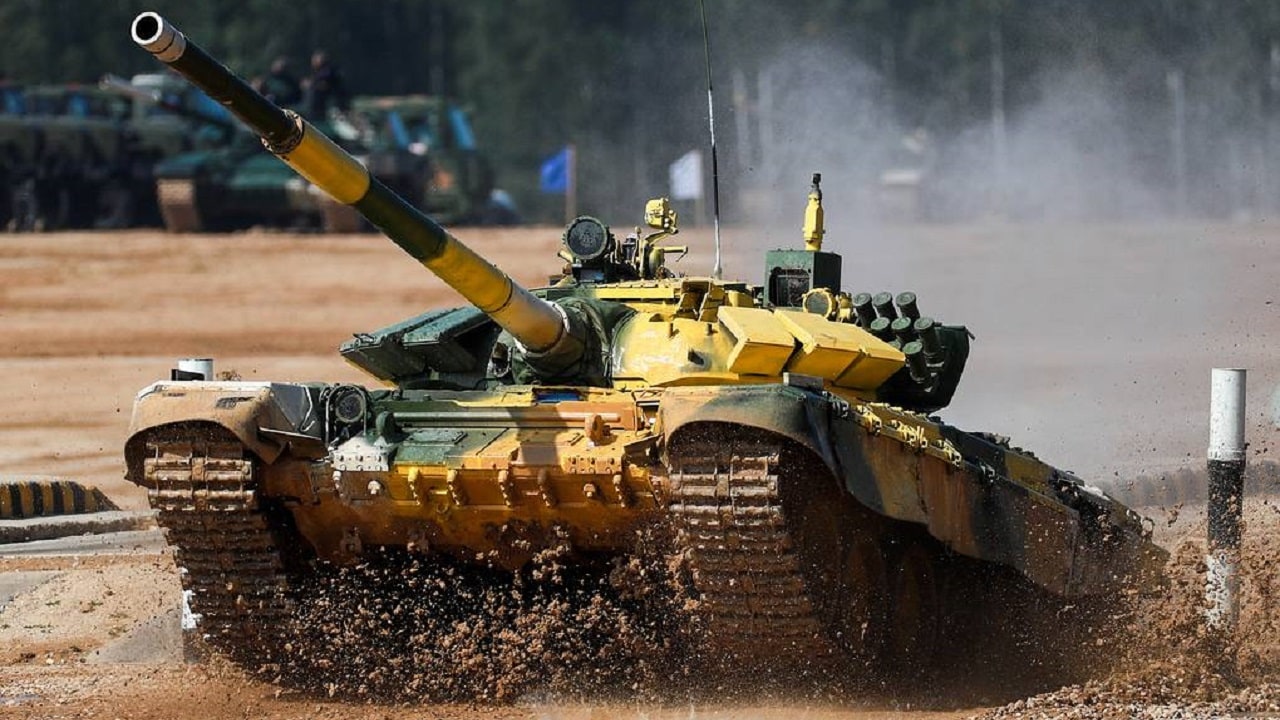This week, Ukraine Weapons Tracker published footage depicting the destruction of a Russian T-72B3 main battle tank (MBT) near Donetsk Oblast.
In the video, a lone armored vehicle appears to be traversing across a field when it suddenly erupts in fumes of smoke.
According to the Twitter handle, the MBT was taken out by the Ukrainian 56thMotorized Brigade after running over an anti-tank mine. Interestingly, the tank did not appear to have backup and was traveling alone, making it an easy target.
Russia’s stockpile of MBTs have not fared well throughout the last fourteen-plus months of warfare in Ukraine.
According to Oryx, Russia lost roughly 1,200 T-72 tanks in the first 12 months of the conflict. Some of these MBTs were destroyed by Ukrainian projectiles, others were left behind by ill-equipped Russian troops or captured.
A brief overview of the T-72 MBT
Since its introduction nearly fifty years ago, the T-72 MBT has remained a mainstay of the Russian military. The tank was first produced in 1970 by the former USSR to effectively counter the North Atlantic Treaty Organization (NATO). Over the years, the T-72 became widely exported- more than 30 countries procured roughly 18,000 vehicles prior to the collapse of the Soviet Union. According to The Tank Museum at Bovington Camp in South West England’s Dorset County, “The T-72 is the most widely used main battle tank in the world. It has been manufactured in six countries, is in service with the armies of 35 nations and has fought in all the major wars of the last 20 years.”
Specs and capabilities
The T-72 has undergone several facelifts since its introduction to service with each successive variant possessing more advanced capabilities. In 2010, the latest T-72B3 variant was designed and is considered to be a third-generation MBT based on its sophistication. While the layout of the newest T-72 model is identical to its predecessors, the MBT sports an advanced fire control system, a new thermal sight and greater mobility characteristics. Ammunition-wise, the T-72B3 can pack a punch. The MBT is equipped with a 2A46M5 125mm smoothbore gun and can fire a range of munitions including high-explosive anti-tank (HEAT), high-explosive fragmentation, guided anti-tank missiles and armor-piercing discarding sabot.
In addition to its greater combat capabilities, the T-72B3 features a range of self-protection measures. As detailed by Army Technology, “The T-72B3M MBT is mounted with the new Relikt explosive reactive armour (ERA) replacing the previous Kontakt-5 second-generation ERA. The new armour offers superior protection against shaped charges, tandem warheads, armour-piercing fin-stabilised discarding sabot (APFSDS) rounds, anti-tank guided missiles, as well as low-velocity and high-velocity missiles.”
Moscow keeps sending in older and older MBTs
Despite the T-72’s more modern capabilities, the tank has not performed well against Ukraine in the ongoing invasion. In fact, Russia has been so desperate to replenish its dwindling tank fleet that it has turned to its storage of even older antiquated vehicles.
Last summer, Ukraine’s Ministry of Defense claimed that Moscow was sending its Soviet-era T-55 and T-62 MBTs to aid its offensive war efforts.
#Ukraine: A Russian T-72B3 tank was destroyed by the Ukrainian 56th Motorized Brigade near Dubovo-Vasylivka, #Donetsk Oblast, after running over an anti-tank mine and then being finished off by AT fire. pic.twitter.com/BoYU23QBM3
— ???????? Ukraine Weapons Tracker (@UAWeapons) May 8, 2023
Maya Carlin, a Senior Editor for 19FortyFive, is an analyst with the Center for Security Policy and a former Anna Sobol Levy Fellow at IDC Herzliya in Israel. She has by-lines in many publications, including The National Interest, Jerusalem Post, and Times of Israel. You can follow her on Twitter: @MayaCarlin.

